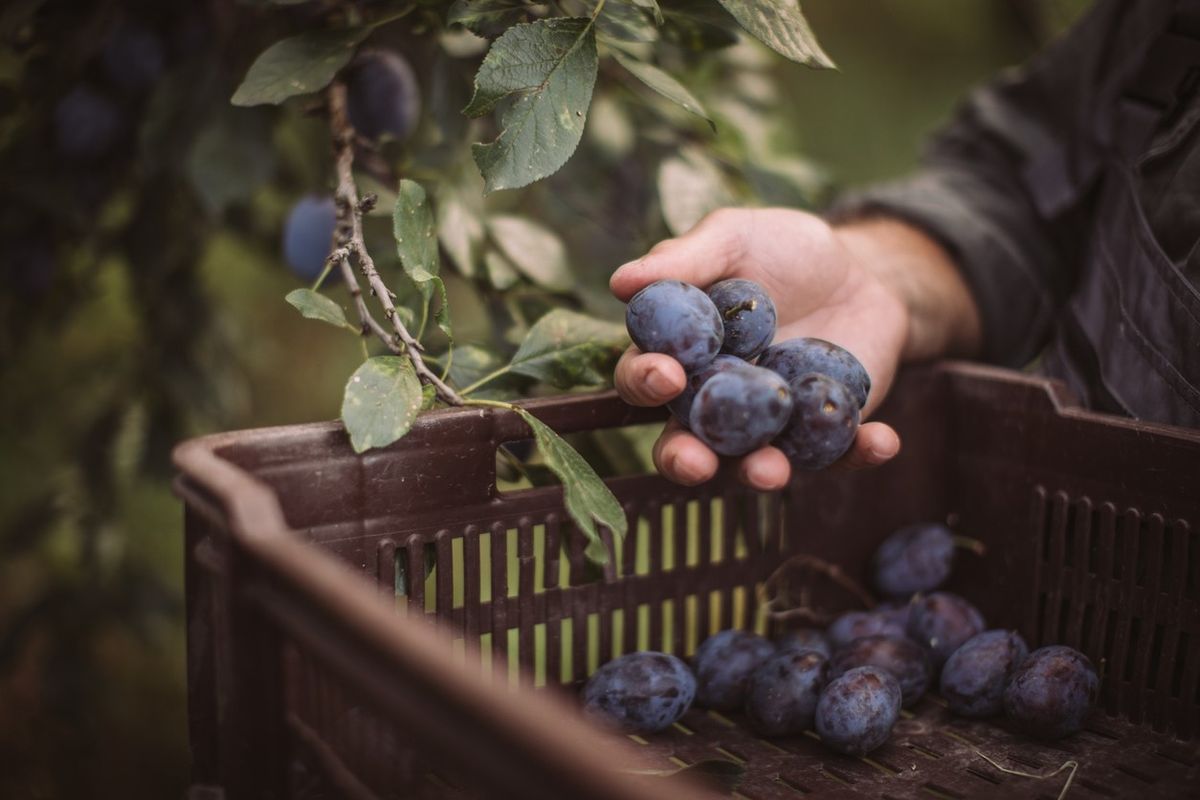Key Points:
- UK plum production is set to double in 2025, marking the strongest harvest in three years, driven by better weather and higher-yielding varieties.
- Growers like WB Chambers have invested in modern farming techniques and new plum varieties, helping improve yield, shelf life, and suitability to the British climate.
- Independent retailers may benefit from the revival, as rising domestic supply and extended season create new sourcing opportunities beyond the major supermarkets.
Plum production in the UK is set to double this year compared to 2024, marking a significant turnaround for a category that has been in decline for over three decades.
One of the country’s largest growers, WB Chambers in Kent, has reported that its own harvest has risen from 150 to 300 tonnes this season, aided by favourable growing conditions and the introduction of higher-yielding varieties better suited to the UK climate.
The strong harvest is echoed by supermarket group Tesco, which says 2025’s crop is the best in at least three years. “The quality of the British-grown plums arriving at our stores across the UK right now is easily the best we’ve seen for several years – plump, juicy and sweet,” said Simon Reeves, Tesco fruit category buying manager.
For independent convenience retailers, the revival in domestic plum production could open up fresh sourcing opportunities – particularly as new varieties help extend the UK season and improve shelf life.
James Miller, Commercial Director at WB Chambers, said the industry is beginning to shake off years of stagnation.
“The UK used to have one of the most vibrant plum industries in Europe, and our orchards were known around the world for producing the classic Victoria variety,” he noted. “As cheaper imports flooded the market and plum production became less profitable, interest in growing the fruit dwindled.”
According to Defra, UK plum production peaked in 1987 at 28,900 tonnes before entering a long decline. By 2008, the national harvest had shrunk to just 2,500 tonnes, as growers turned to more profitable crops like berries and apples. Over the same period, the land area dedicated to plums fell from 2,400 hectares in 1985 to just 800 hectares in 2017.
Miller said better returns and improved agronomy are finally reversing that trend.
“We have now invested in new root stocks as well as modern farming systems such as automatic minimal irrigation and soil moisture analysis,” he said, adding that newer varieties like ‘Top Hit’, ‘Top Taste’, and ‘Top End’ are delivering “great quality plums that not only taste wonderful but also have a better shelf life that will help cut down on wastage.”
“And even better for the industry is that these varieties are better suited to the British climate and that will help us extend the UK growing season.”
With signs of long-term improvement, the British plum could once again become a staple of the summer fruit basket and independents may benefit from tapping into regional growers and alternative wholesale routes, particularly as consumer demand for seasonal British produce grows.


